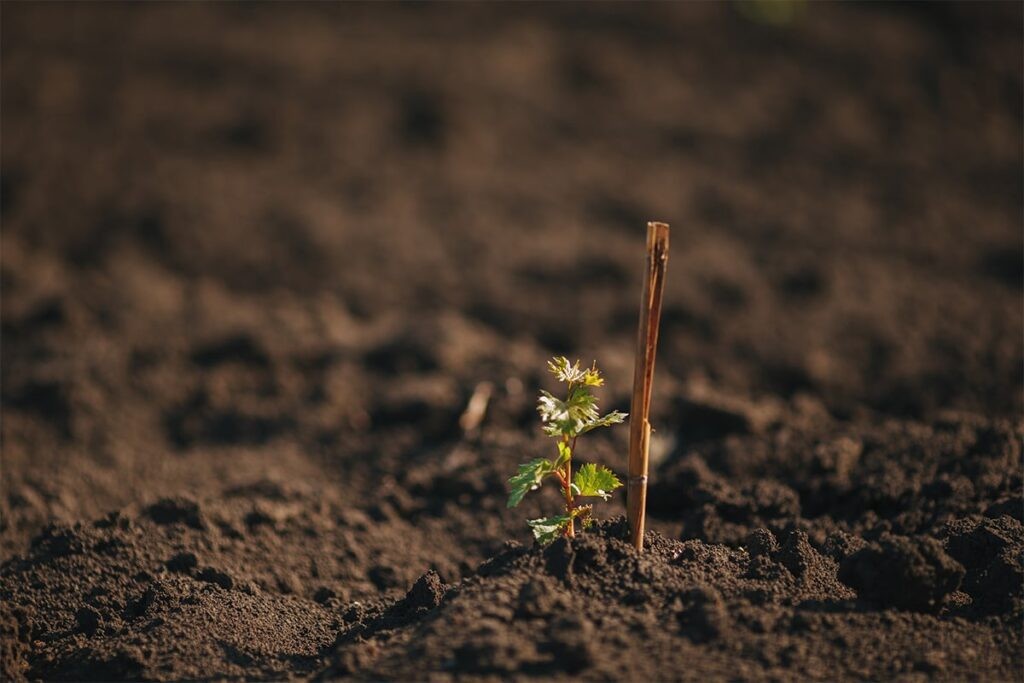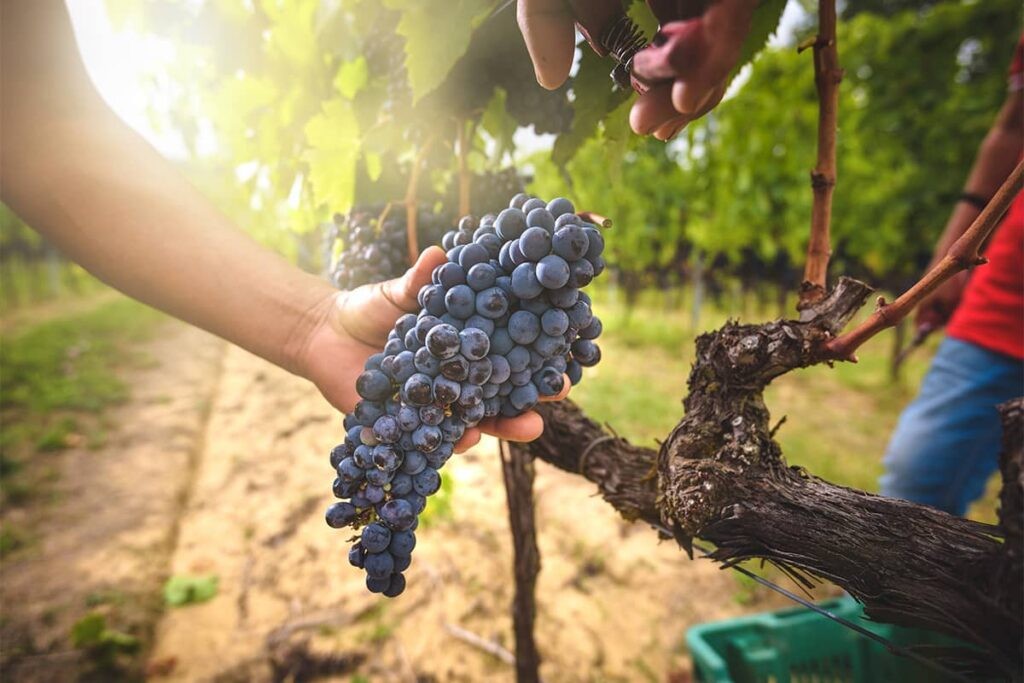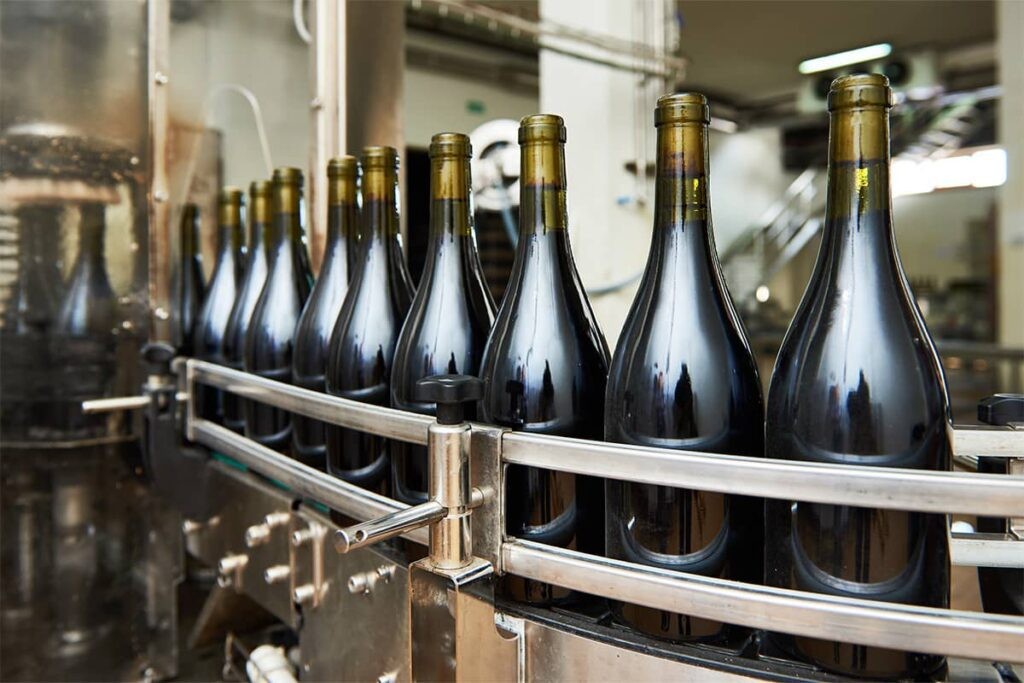Crafting wine is both an art and a science, transforming simple grapes into a complex and enjoyable beverage. SIXT.VN offers you the ultimate convenience to explore the world of Vietnamese wines and vineyards. Discover the complete process of crafting wine and enhance your travel experience in Vietnam with our seamless services.
Table of Contents
- 1. What Are the Essential Steps in Making Can Wine?
- 2. Why Are Grapes Crucial for Wine Production?
- 3. How Does Climate Influence Grape Selection for Winemaking?
- 4. What Role Does Pruning Play in Grape Vine Cultivation?
- 5. What Are the Key Indicators for Harvesting Grapes?
- 6. What Are the Differences Between Manual and Machine Harvesting of Grapes?
- 7. How Does Pressing or Crushing Contribute to Wine Quality?
- 8. Why Is Fermentation a Critical Stage in Winemaking?
- 9. What Is the Purpose of Clarification in Wine Production?
- 10. How Does Aging and Bottling Affect Wine Flavor and Quality?
- 11. How Can SIXT.VN Enhance Your Wine Tour Experience in Vietnam?
- 12. FAQs about Making Can Wine
1. What Are the Essential Steps in Making Can Wine?
The fundamental steps in making Can wine include growing, harvesting, crushing, pressing, fermentation, clarification, and aging/bottling, each influencing the final product’s flavor profile and quality. These meticulously executed steps are essential for transforming simple grapes into a complex, enjoyable drink, demonstrating the winemaker’s artistry and dedication.
The wine-making process begins with the cultivation of grapes, choosing the right variety for the climate and soil. Once the grapes reach optimal ripeness, they are harvested, either by hand or machine. The harvested grapes are then crushed and pressed to extract their juice, which is fermented to convert sugars into alcohol. Following fermentation, the wine undergoes clarification to remove solids and impurities. Finally, the wine is aged to develop its flavors and bottled for enjoyment.
2. Why Are Grapes Crucial for Wine Production?
Grapes are essential for wine production because they possess the perfect balance of sugars, acids, esters, and tannins necessary to consistently create stable, flavorful wine. Their unique composition allows for efficient alcohol production and ensures the wine’s preservation and quality.
Grapes naturally contain enough sugar to be effectively converted into alcohol during fermentation. The presence of requisite acids, esters, and tannins is critical for the wine’s structure, aroma, and longevity. Acids contribute to the wine’s crispness and balance, esters enhance its aromatic complexity, and tannins provide structure and aging potential. Without this unique combination of elements found in grapes, producing stable and high-quality wine would be exceedingly difficult.
 Close-up of a small grape vine just starting to grow from the earth
Close-up of a small grape vine just starting to grow from the earth
3. How Does Climate Influence Grape Selection for Winemaking?
Climate significantly influences grape selection in winemaking, with winemakers choosing grape varietals that thrive in specific temperature ranges and weather conditions to ensure optimal growth and flavor development. Selecting the right grape for the climate is crucial for producing high-quality wine.
In warmer climates, winemakers often select heat-resistant grape varieties like Cabernet Sauvignon or Syrah, which can withstand high temperatures and maintain their quality. In cooler climates, varieties such as Riesling or Pinot Noir are preferred, as they ripen best in milder conditions. The climate affects not only the grape’s ability to grow but also its sugar content, acidity, and overall flavor profile, all of which are critical to the final wine.
According to a study by the Wine Institute, in [Year], climate conditions account for up to [Percentage]% of the variability in grape yield and quality.
4. What Role Does Pruning Play in Grape Vine Cultivation?
Pruning plays a crucial role in grape vine cultivation by controlling the vine’s growth, improving fruit quality, and ensuring a better yield each season, thereby promoting overall vine health and productivity. It also allows winemakers to shape the vines for optimal sunlight exposure and air circulation.
Winemakers typically prune their grapevines during the dormant winter months when the vines are easier to manage. Pruning involves removing excess shoots, leaves, and buds, which redirects the plant’s energy towards producing fewer but higher-quality grapes. This practice also helps to prevent diseases by improving air circulation around the vines. By carefully pruning the grapevines each year, winemakers can maintain the health and productivity of their vineyards.
5. What Are the Key Indicators for Harvesting Grapes?
The key indicators for harvesting grapes are the sugar content, acidity levels, and overall taste of the grapes, which winemakers assess using refractometers and taste tests to determine the optimal time for harvest. Achieving the right balance of these factors is essential for producing high-quality wine.
Winemakers use a refractometer to measure the sugar content (Brix) of the grapes. They also perform regular tastings to assess the grape’s flavor development, tannin levels, and overall ripeness. The decision to harvest is based on reaching the desired balance of sugar, acidity, and flavor, which varies depending on the grape variety and the style of wine being produced. Careful monitoring and assessment are crucial to ensure that the grapes are harvested at their peak.
 Close-up of hands carefully picking ripe grapes from a vine
Close-up of hands carefully picking ripe grapes from a vine
6. What Are the Differences Between Manual and Machine Harvesting of Grapes?
The differences between manual and machine harvesting of grapes lie in the precision, labor requirements, and cost, with manual harvesting allowing for selective picking and gentler handling, while machine harvesting is faster and more cost-effective. The choice between the two methods depends on the vineyard’s size, terrain, and the desired quality of the wine.
Manual harvesting involves hand-picking grapes and placing them in small baskets, allowing workers to select only the ripe and healthy grapes. This method is ideal for vineyards with steep slopes or delicate grape varieties. In contrast, machine harvesting uses mechanical harvesters to shake the vines and collect the grapes, which is faster and more efficient for large, flat vineyards. While machine harvesting can be more economical, it may also result in more damaged grapes and less selective picking.
| Feature | Manual Harvesting | Machine Harvesting |
|---|---|---|
| Precision | Selective picking of ripe grapes | Less selective, may include unripe or damaged grapes |
| Labor | Labor-intensive, requires skilled workers | Less labor-intensive, requires machine operators |
| Cost | Higher labor costs | Lower labor costs |
| Grape Handling | Gentler handling, minimizes damage | More aggressive, may cause damage to grapes |
| Vineyard Suitability | Ideal for steep slopes and delicate grape varieties | Suitable for large, flat vineyards |
7. How Does Pressing or Crushing Contribute to Wine Quality?
Pressing or crushing contributes significantly to wine quality by extracting the juice from the grapes while minimizing damage to the seeds and skins, which can release unwanted tannins and bitter flavors into the wine. Modern pressing techniques help ensure a cleaner, higher-quality juice.
Traditionally, grapes were crushed by foot in a harvest ceremony. Today, machines are used to crush the grapes into liquid, which allows for better control and reduces the risk of contamination. Winemakers can choose to press the grapes immediately after crushing or wait until fermentation begins within whole grape clusters. The pressing process varies depending on whether the winemaker is making red or white wine. For white wine, the must is pressed after crushing to remove the juice from the skins, resulting in a lighter-colored wine.
 Close-up of hands holding mashed grapes during the wine production process
Close-up of hands holding mashed grapes during the wine production process
8. Why Is Fermentation a Critical Stage in Winemaking?
Fermentation is a critical stage in winemaking because it converts the natural sugars in the grape juice into alcohol, defining the wine’s alcoholic content and contributing to its unique flavor profile. The winemaker’s expertise in managing this process is essential for producing high-quality wine.
During fermentation, winemakers often introduce carefully chosen yeast strains to ensure a controlled and consistent process. These yeasts consume the sugars in the must and produce alcohol and carbon dioxide as byproducts. The duration of fermentation can vary from a few days to several weeks, depending on the desired alcohol level and flavor characteristics. Some winemakers may halt the fermentation process before all the sugar is converted, resulting in a sweeter wine. The artistry and science of fermentation greatly influence the final product’s quality.
9. What Is the Purpose of Clarification in Wine Production?
The purpose of clarification in wine production is to remove any solids, dead yeast cells, and other impurities from the wine, resulting in a clear, stable, and visually appealing product. Clarification enhances the wine’s overall quality and prevents unwanted flavors or sediment from forming in the bottle.
Clarification methods include racking, filtration, and fining. Racking involves siphoning the wine from one barrel to another, leaving behind precipitates and pomace. Filtration uses various filters to remove fine particles, while fining involves adding substances like clay or egg whites to the wine to bind with and remove any remaining solids. These processes ensure that the wine is clear and free of any unwanted substances before aging or bottling.
10. How Does Aging and Bottling Affect Wine Flavor and Quality?
Aging and bottling significantly affect wine flavor and quality by allowing the wine to develop more complex aromas and flavors, soften its tannins, and integrate its various components into a harmonious whole. The choice of aging vessel and duration plays a crucial role in the wine’s final characteristics.
After clarification, the wine can be bottled immediately or undergo additional aging. Aging can occur in oak barrels or stainless steel tanks, with each material imparting different flavors and textures. Oak barrels can add notes of vanilla, spice, and toast, while stainless steel tanks preserve the wine’s fresh fruit flavors. The duration of aging can range from a few months to several years, depending on the type of wine and the winemaker’s preferences. Once aging is complete, the wine is bottled, where it may continue to evolve over time.
 Bottles of wine moving along an assembly line during the bottling process
Bottles of wine moving along an assembly line during the bottling process
11. How Can SIXT.VN Enhance Your Wine Tour Experience in Vietnam?
SIXT.VN can significantly enhance your wine tour experience in Vietnam by providing convenient and reliable services such as airport transfers, hotel bookings, and customized tour packages, ensuring a seamless and enjoyable journey. With SIXT.VN, you can focus on exploring the vineyards and tasting exquisite wines without worrying about logistics.
With SIXT.VN, planning your wine tour in Vietnam becomes effortless. We offer a range of services to cater to your specific needs, including:
- Airport Transfers: Ensure a smooth arrival and departure with our reliable airport transfer services.
- Hotel Bookings: Choose from a variety of hotels that suit your budget and preferences.
- Customized Tour Packages: Tailor your wine tour to include specific vineyards, tastings, and cultural experiences.
Let SIXT.VN take care of the details, so you can savor every moment of your wine tour adventure in Vietnam. Contact us today via Hotline/WhatsApp: +84 986 244 358 or visit our website SIXT.VN. Our address is 260 Cau Giay, Hanoi, Vietnam.
Ready to embark on an unforgettable wine tour in Vietnam? Contact SIXT.VN today for personalized assistance and seamless travel arrangements!
12. FAQs about Making Can Wine
-
What types of grapes are best for making red wine?
Grape varieties like Cabernet Sauvignon, Merlot, and Pinot Noir are ideal for red wine, providing rich flavors and tannins. These grapes thrive in specific climates and soil conditions, contributing to the wine’s complexity.
-
How long does the fermentation process typically take?
The fermentation process usually takes between 10 days to a month, depending on the yeast, temperature, and desired alcohol level. Some winemakers may extend the fermentation period for specific flavor profiles.
-
What is the role of tannins in wine?
Tannins provide structure and aging potential to wine, contributing to its dryness and complexity. They are naturally present in grape skins, seeds, and stems, and can also be imparted by oak barrels during aging.
-
How do winemakers control the sweetness of wine?
Winemakers control sweetness by halting fermentation before all sugars are converted into alcohol, leaving residual sugar in the wine. This process requires careful monitoring and precise timing.
-
What are the benefits of aging wine in oak barrels?
Aging wine in oak barrels can add flavors like vanilla, spice, and toast, as well as soften tannins and improve the wine’s overall structure. The type of oak and the barrel’s age also influence the wine’s flavor profile.
-
How important is temperature control during winemaking?
Temperature control is crucial during winemaking to ensure optimal yeast activity, prevent unwanted microbial growth, and preserve the wine’s delicate aromas and flavors. Winemakers use cooling and heating systems to maintain consistent temperatures.
-
What is the significance of terroir in winemaking?
Terroir refers to the unique environmental factors, including soil, climate, and topography, that influence the flavor and characteristics of wine. It is believed that terroir contributes to the distinctive qualities of wines from specific regions.
-
Can wine be made from fruits other than grapes?
Yes, wine can be made from other fruits, such as apples, berries, and plums, but these wines are typically labeled as fruit wines to distinguish them from grape wines. The process is similar, involving fermentation of the fruit’s sugars into alcohol.
-
How do winemakers prevent oxidation in wine?
Winemakers prevent oxidation by minimizing exposure to air during winemaking and aging, using techniques like topping up barrels, adding sulfur dioxide, and employing inert gases. Oxidation can lead to off-flavors and spoilage.
-
What is the role of acidity in wine?
Acidity contributes to the wine’s crispness, balance, and aging potential, helping to preserve its freshness and vibrancy. Winemakers carefully manage acidity levels through grape selection, harvesting timing, and winemaking techniques.



